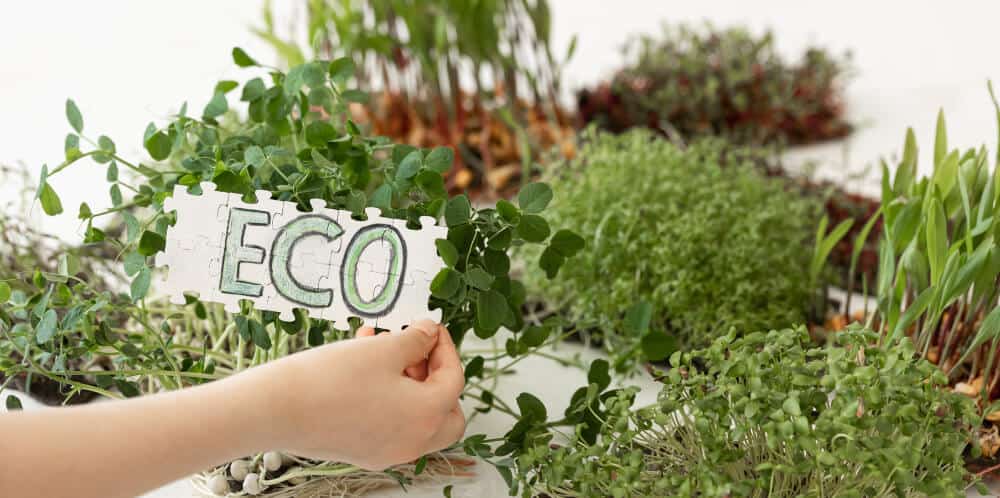
In the face of climate change, environmental degradation, and a rapidly growing global population, the need for sustainable agricultural practices has never been more urgent. Eco-friendly agricultural practices not only aim to increase food production but also strive to minimize the negative impact on the environment, ensuring a healthier planet for future generations.
This article explores various eco-friendly agricultural practices that are essential for achieving a sustainable future.
Understanding Eco-Friendly Agricultural Practices
Eco-friendly agricultural practices are methods of farming that aim to reduce environmental impact, conserve natural resources, and maintain the ecological balance. These practices focus on long-term sustainability rather than short-term gains, ensuring that farming can continue to provide for future generations. They include a range of techniques and principles designed to work in harmony with nature.
Organic Farming
Organic farming is one of the most well-known eco-friendly agricultural practices. It involves growing crops and raising livestock without synthetic pesticides, herbicides, or fertilizers. Instead, organic farmers use natural methods such as crop rotation, green manure, compost, and biological pest control to maintain soil fertility and control pests.
The benefits of organic farming are manifold. It reduces pollution, conserves water, improves soil health, and promotes biodiversity. Moreover, organic produce is often healthier for consumers, as it is free from harmful chemicals and pesticides.
Agroforestry
Agroforestry combines agriculture and forestry to create integrated and sustainable land-use systems. This practice involves planting trees and shrubs alongside crops or livestock. The trees provide shade and wind protection, reduce soil erosion, and improve water retention. Additionally, they can offer a habitat for wildlife and increase biodiversity.
Agroforestry enhances the productivity and sustainability of the land. The trees can also provide additional income streams for farmers through the sale of timber, fruits, nuts, or other tree products, making it a win-win solution for both farmers and the environment.
Conservation Tillage
Conservation tillage is a farming practice that minimizes soil disturbance, helping to preserve soil structure and health. Traditional plowing can lead to soil erosion, loss of organic matter, and degradation of soil health. Conservation tillage techniques, such as no-till or reduced-till farming, leave the previous year’s crop residue on the field, which helps protect the soil from erosion, retain moisture, and improve soil fertility over time.
By reducing the need for mechanical tilling, farmers also save on fuel and labor costs, making conservation tillage both environmentally and economically beneficial.
Integrated Pest Management (IPM)
Integrated Pest Management (IPM) is an eco-friendly approach to controlling pests that combines biological, cultural, mechanical, and chemical methods. The goal of IPM is to manage pest populations at acceptable levels while minimizing the use of harmful pesticides.
IPM strategies include using natural predators, planting pest-resistant crop varieties, rotating crops to disrupt pest life cycles, and using pheromone traps to monitor and control pest populations. By reducing reliance on chemical pesticides, IPM helps protect beneficial insects, wildlife, and the environment.
Cover Cropping
Cover cropping involves planting specific crops, such as legumes or grasses, during the off-season when fields would otherwise be bare. These cover crops help prevent soil erosion, improve soil structure, enhance nutrient cycling, and suppress weeds.
Cover crops also increase soil organic matter and promote beneficial soil microorganisms, which contribute to overall soil health. When cover crops are incorporated into the soil, they add valuable nutrients, reducing the need for synthetic fertilizers.
Water Management
Effective water management is crucial for sustainable agriculture. Eco-friendly practices focus on conserving water and improving water use efficiency. Techniques such as drip irrigation, rainwater harvesting, and mulching help optimize water use and reduce waste.
Drip irrigation delivers water directly to the plant roots, minimizing evaporation and runoff. Rainwater harvesting collects and stores rainwater for use during dry periods. Mulching, the practice of covering the soil with organic or inorganic materials, helps retain soil moisture and suppress weeds.
Crop Rotation and Diversification
Crop rotation involves growing different types of crops in the same area in sequential seasons. This practice helps break pest and disease cycles, improves soil health, and reduces the need for chemical inputs. Crop diversification, on the other hand, involves growing a variety of crops simultaneously or in rotation, which can enhance biodiversity and resilience to environmental stresses.
Both crop rotation and diversification contribute to sustainable farming by improving soil fertility, reducing pest and disease pressure, and enhancing ecosystem services.
Sustainable Livestock Management
Eco-friendly agricultural practices are not limited to crop production; they also extend to livestock management. Sustainable livestock practices include rotational grazing, integrated livestock-crop systems, and organic animal husbandry.
Rotational grazing involves moving livestock between pastures to prevent overgrazing and allow vegetation to recover. Integrated livestock-crop systems use livestock manure as fertilizer for crops, creating a closed-loop system that reduces waste and improves soil health. Organic animal husbandry ensures that livestock are raised without synthetic hormones or antibiotics, promoting animal welfare and reducing environmental impact.
Conclusion
Eco-friendly agricultural practices are essential for creating a sustainable future. By adopting methods such as organic farming, agroforestry, conservation tillage, integrated pest management, cover cropping, water management, crop rotation, and sustainable livestock management, farmers can produce food in a way that protects and preserves the environment.
These practices not only enhance agricultural productivity but also ensure that farming can continue to provide for future generations without depleting natural resources or causing irreversible environmental damage. Embracing eco-friendly agricultural practices is a crucial step towards achieving global food security and environmental sustainability.
By making conscious choices and implementing sustainable practices, we can work towards a healthier planet and a more sustainable future for all.


